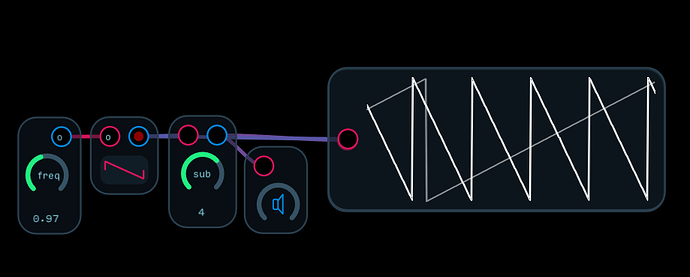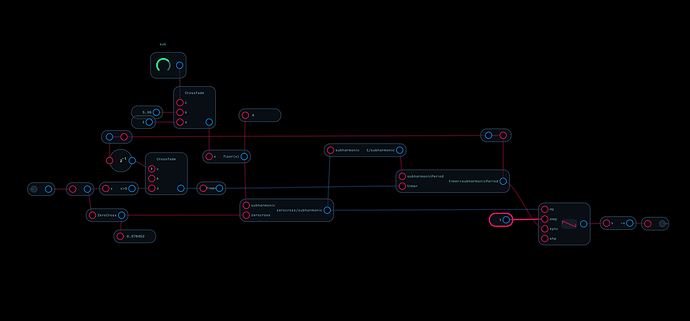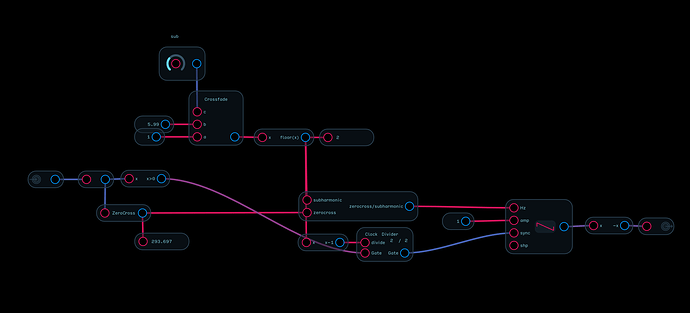So I had an idea about how to make a subharmonic generator from an arbitrary input. It works well at subaudio rates but at audio rates it’s rather glitchy.
I know that it’s more practical in Audlus to simply stack some more oscillators in there and make a switch, but I am curious where I am going wrong. Also I like the glitchy sounds I am getting with it and thought maybe others would as well.
subharmonic glitchy.audulus (22.7 KB)
3 Likes
That seems like an overly complex way to sync the sub output. I would probably use a counter to count positive zero crossings instead. For one octave down trigger every 2nd pulse, 2 down every 4th etc.
1 Like
Yeah probably too clever by half.
It is a reeally neat circuit! 
1 Like
Thanks! I appreciate the second pair of eyes.
That’s what the subharmonic oscillator in the library does now - this oscillator could produce a non-aliased waveform though? But then the question would be is this application more for tracking audio that’s incoming vs. just creating a second oscillator that’s pitched down? Maybe some of the charm of a suboscillator is that it’s glitchy…
2 Likes
The frequency is derived from a zero crossing detector. I was just suggesting an alternative for syncing the waveforms.
2 Likes
subharmonic simplified.audulus (149.7 KB)
Well the clock divider approach worked much better, although I was a little surprised to realize that this is actually a more complex approach. You can tell because I named the patch “simplified”  I guess it’s just simpler for me to understand, since I have a pretty good handle on counters by this point.
I guess it’s just simpler for me to understand, since I have a pretty good handle on counters by this point.
I have come to appreciate, through the experiments with the harmonic series quantizer in the microtonal thread, that the first 5 subharmonics of any given note sounds very diatonic. So I was thinking it might be a fun way to create accompaniment or just new melodic variations by by sequencing the subharmonics. Also I suspect it will sound weird if you run a voice or drums through it, although I haven’t tried that yet.
2 Likes
I missed the point of the exercise I think. When I originally looked at your post I was thinking that you were only generating the sub-octaves. After reading your comments I now realize that you were creating an inverted harmonic series. That does make the counter approach more complex than if you were just creating octave values. Interesting idea! 
2 Likes
I just realized that I wrote sub octave generator in the JFET thread so that MIGHT have something to do with it 
2 Likes
On the topic of subharmonics, I was intrigued by Loopop’s video on not so obvious things one can do with the O-Coast, one of which is generating subharmonics with the slope generator (around 12m40s in the video). I was wondering how they implement that and how something similar might be achieved with the 1-Toast.
2 Likes




